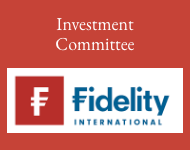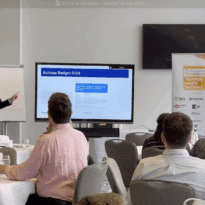Funds that are currently performing well, despite challenging times, are those with relatively high turnover, says David Jane, Fund Manager, Premier Miton Macro Thematic Multi Asset Team.
Most fund selectors consider there to be two basic types of funds, active or passive. These day active funds could also be split into two broad categories, high turnover actives, and static portfolios with high active share.
Many years ago, most active funds were relatively high turnover, but these have in many cases been replaced by what I would term, static high active share or static non-index. Here the list of stocks rarely changes, some managers are proud that they only replace a handful of holdings a year. Pressure to reduce turnover on active funds really escalated after ‘transaction cost’ disclosure.
In my opinion this approach comes with two huge drawbacks. Firstly, if stocks are left to run with no adjustments made to weights, the risk in a portfolio will naturally become heavily concentrated in the best performing positions. As risk becomes concentrated in these largest positions, they crowd out the rest of the portfolio. It is also irrational, why would you prefer a stock that has doubled?
The second problem is that these strategies can be very easy to replicate. Once the stock selection criteria are identified, the process becomes easy to replicate for a passive manager. Indeed, given holdings are regularly published, this job would be simple. Investment banks already offer hedge fund replication strategies; it is only a matter of time until passive providers start producing equivalents of active strategies.
A number of professional fund selectors have recently observed that those funds that are currently performing well, in these challenging times, are those with relatively high turnover. It is a particularly favourable moment for these funds, the dominant factors being momentum and large size. We would argue turnover is an unalloyed benefit at all times.
Pragmatism is essential for multi asset managers. The market environment is constantly changing, leadership constantly shifting between asset classes, regions, sectors, styles and themes. At the same time, the risk environment also regularly shifts. Consider the shift in the relationship between equities and bonds that coincided with the move from a lower for longer environment to higher for longer.
Clients want their multi asset funds to adapt and perform consistently during these changes. As market conditions change over time, without considerable turnover, it is not possible to adapt to these changes. Whether it is different investment styles, different regions, sectors or themes, adaptability is much more likely to give a consistent return than a static approach. Static approaches tend to shine brightly for brief period, gaining considerable attention, before fading into obscurity.
The other important value added from turnover is to actively manage risk. If you base your risk model on some form of index, then market moves will not change your perceived risk. This is obviously absurd, risk is not a relative concept from the point of view of a client, but an absolute one. Strategic asset allocations that had been developed for the lower for longer environment struggled greatly once that no longer prevailed. When 2022 hit their reliance on long duration bonds to diversify equity risk, it no longer worked.
In fact, we would criticise strategic asset allocations on principle: they lead to an unwillingness to adapt to changing conditions. They will inevitably reflect the conditions that prevailed at the time when they were last set. It is the reason so many mixed asset managers cling on to their assets long after they have stopped contributing and ignore asset classes that have become relevant again. For example, few mixed asset managers even consider commodities, likely because of their long period in the wilderness during lower for longer. Now, having seen a considerable return from gold and silver, many are adding it into their asset allocation framework.
In our view, the key to success at both a stock selection and asset allocation level is pragmatism. Being prepared to adapt to changing market conditions, being unafraid to cut losing positions before they do meaningful damage and being prepared to rescale positions such that risk is appropriately balanced in a portfolio. These all require considerable portfolio turnover but are key aspects of running a genuinely active portfolio.
This information should not be relied upon by retail clients or investment professionals. The views provided are those of the author at the time of writing and do not constitute advice. These views are subject to change and do not necessarily reflect the views of Premier Miton Investors. The value of investments may fluctuate which will cause fund prices to fall as well as rise and investors may not get back the original amount invested. Reference to any particular investment does not constitute a recommendation to buy or sell the investment.
Main image: saj-shafique-P7NksJ6ZvJc-unsplash
































